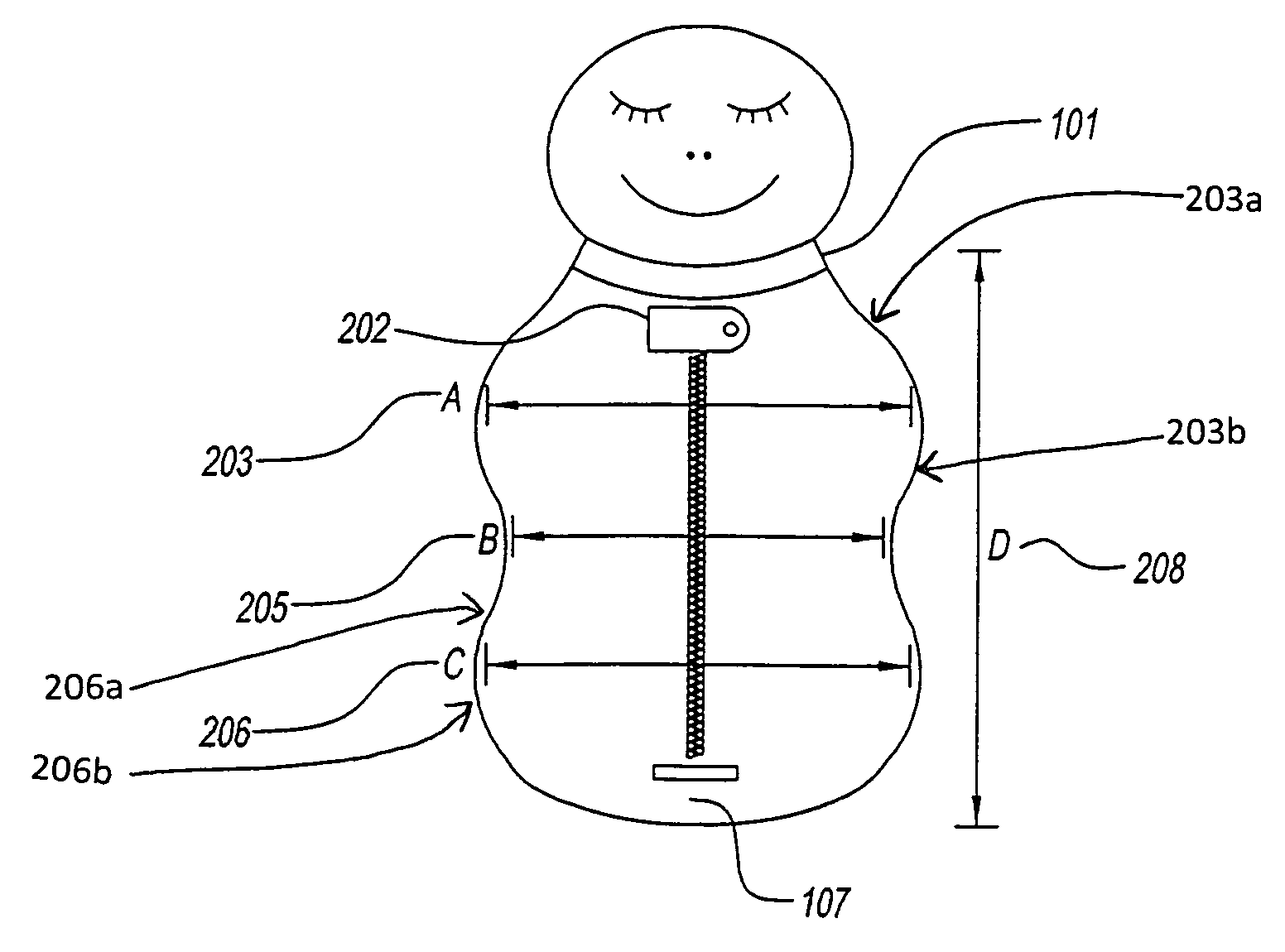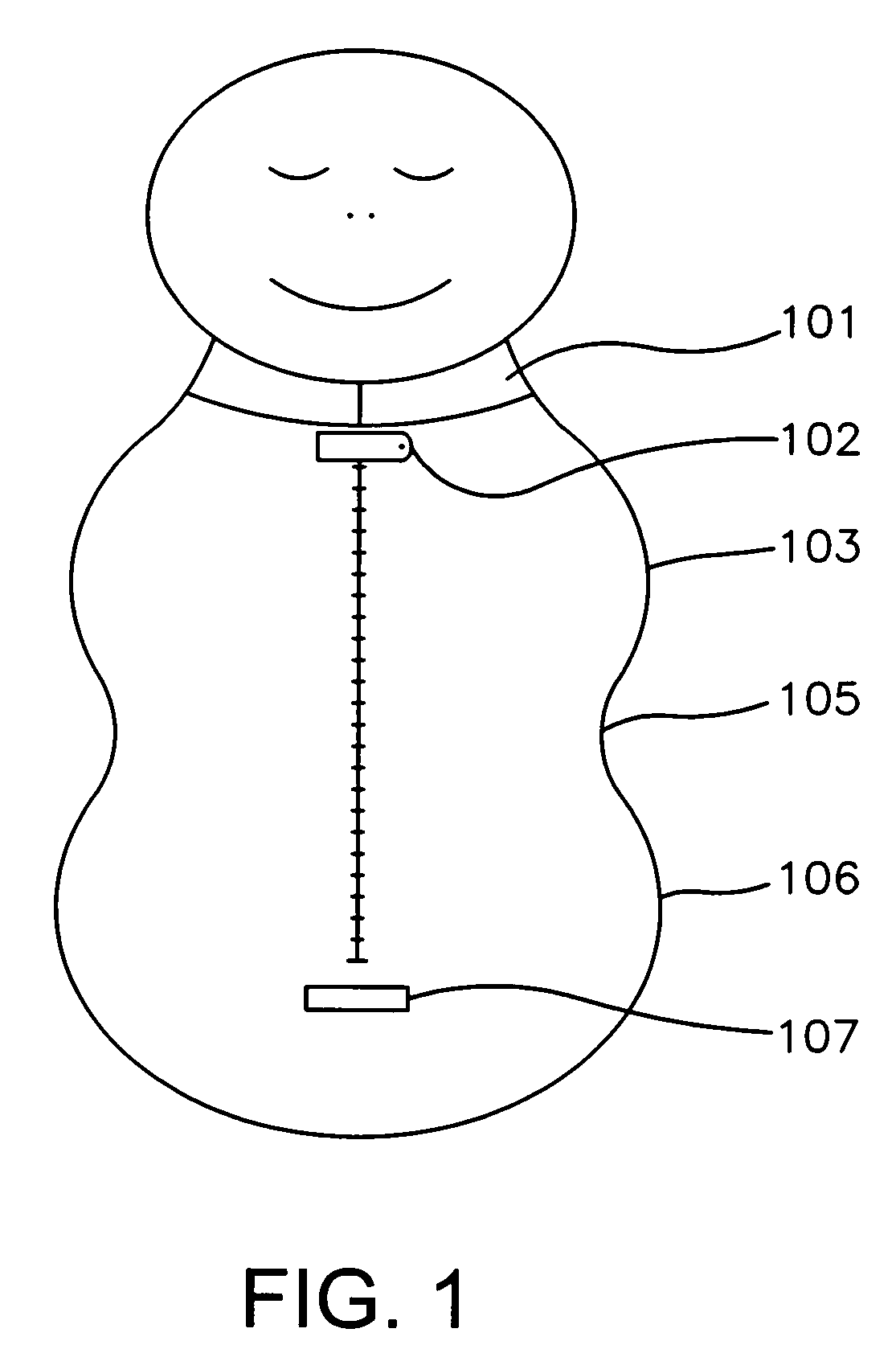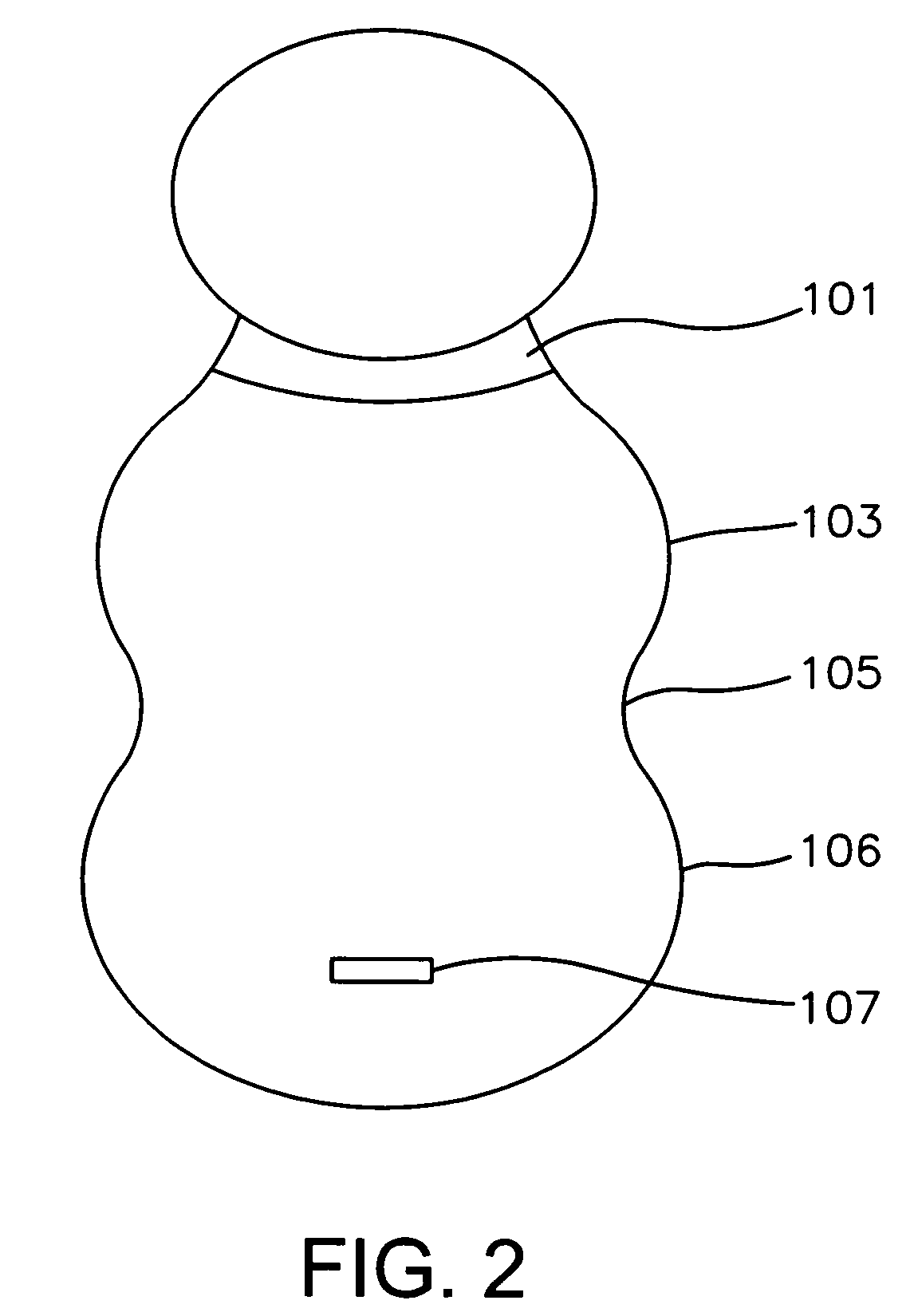Ergonomic swaddling garment
a technology for swaddling blankets and infants, applied in the field of infant garments, can solve the problems of limited swaddling blankets, limited swaddling blankets, and limited durability of current designs, and achieve the effects of maximum comfort, safety, and ease of us
- Summary
- Abstract
- Description
- Claims
- Application Information
AI Technical Summary
Benefits of technology
Problems solved by technology
Method used
Image
Examples
Embodiment Construction
[0045]The development of the subject invention began with a concern that the functional and structural characteristics of infants had not been adequately considered in the design of prior art swaddling garments for optimal safety and utility. While today the scientific discipline of ergonomics is routinely concerned with designing according to human needs, the theory, principles and methodology to design in order to optimize human products and system performance is not generally used in the design of infant garments. The present invention has designed novel ergonomic swaddling garments for infants that are compatible with the needs, abilities and limitations of the newborn and their parents or caregivers. There is little question that many clothing and other products used with infants could benefit from redesign based on ergonomic principles. Safety, comfort, ease of use, productivity / performance and aesthetics are five basic aspects of ergonomics that have been employed in the desi...
PUM
 Login to View More
Login to View More Abstract
Description
Claims
Application Information
 Login to View More
Login to View More - R&D
- Intellectual Property
- Life Sciences
- Materials
- Tech Scout
- Unparalleled Data Quality
- Higher Quality Content
- 60% Fewer Hallucinations
Browse by: Latest US Patents, China's latest patents, Technical Efficacy Thesaurus, Application Domain, Technology Topic, Popular Technical Reports.
© 2025 PatSnap. All rights reserved.Legal|Privacy policy|Modern Slavery Act Transparency Statement|Sitemap|About US| Contact US: help@patsnap.com



